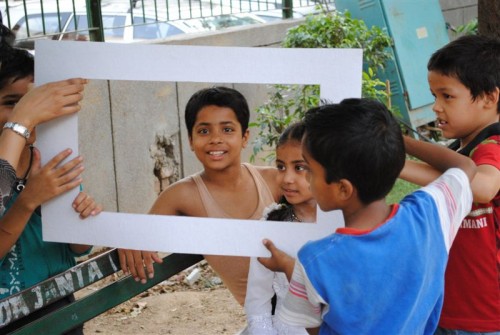Khoj: A movement of, by and for the artists
I first came to know about Khoj International Artists’ Association when I met Pooja Sood, one of their founder-directors. The only thing common between me and Pooja was that we
I first came to know about Khoj International Artists’ Association when I met Pooja Sood, one of their founder-directors. The only thing common between me and Pooja was that we were both present at the UnBox Design Festival in Delhi. The difference being that I was a media representative and she was a speaker called upon to discuss creative platforms that demonstrate the power to create alternative paradigms of experience.
 Pooja Sood is an independent Curator and Art Management Consultant – one of those people that Indian art desperately needs. Apart from the field of curating alternative contemporary art practices in India, Pooja has also been exploring different models of institution building for contemporary art. Her commitment lies in developing the infrastructure for arts in India, South Asia and elsewhere. Khoj has been part of that commitment and more.
Pooja Sood is an independent Curator and Art Management Consultant – one of those people that Indian art desperately needs. Apart from the field of curating alternative contemporary art practices in India, Pooja has also been exploring different models of institution building for contemporary art. Her commitment lies in developing the infrastructure for arts in India, South Asia and elsewhere. Khoj has been part of that commitment and more.
“Khoj was started in 1997 by artists like Subodh Gupta, Bharti Kher and Manisha Parekh. I was the only non-artist in the founder group. The idea was to be an artist led society aimed at promoting intercultural understanding through experimentation and exchange,” says Pooja. However, international funding did not come easy. And when it did, it was sixty thousand rupees, Pooja remembers.”I went to Pakistan, Sri Lanka and Bangladesh to discover opportunity for artists, when we got our first funding. Even before that for almost five years we had been calling artists for workshops. This was one of our first experiments in the outskirts of Delhi.”

As a founding member of Khoj, Pooja coordinated the Khoj International artist’s workshop in Delhi from 1998-2001, facilitated the workshops in Bangalore 2002-2003, in Mumbai 2005, Kolkata2006 and Srinagar 2007. In New Delhi, she has developed a radical space for alternative art practice at the Khoj studios, which runs workshops, international residency programmes and diverse projects. She has raised funding for the development of a pilot national network for the arts based on the Khoj model. “We invite artists from local places. They bring their unique skillsets together in a creative space. We support these artists in many ways,” says Pooja.
Today, Khoj has many interesting projects both locally and globally. Take the case of the Play @ Khirkee project in Delhi. Artists Sudeshna Chatterjee explains how the project seeks to explore the patterns and affordances of play for children and young people in Khirkee. Taking something as basic as the right of children to play, this initiative goes beyond art and attempts to study social and behavioural dynamics at play. Extending its reach, Khoj started Khoj Studios – a residency programme for artists – in 2003. This provides 4-6 weeks access to Studio facilities and equipment to emerging artists. The building is in fact situated close to Khirkee village near Malviya Nagar in South Delhi. This area represents India’s heritage. Established in the 13th Century, it is known for its famous and stunningly beautiful Khirkee Masjid. The studio attracts curators and art professionals and also doubles up as a gallery and a viewing space for film screenings, artists presentations etc.

Why is such an initiative necessary and important? “In 2005, the art scene in India suddenly blew up. Galleries started doing everything for artists. Artists were moving on, establishing full-fledged careers. At that point we found ourselves questions our existence. Had we become redundant? Maybe it was okay to shut down. However, at the same time, there was a large chunk of artists that had to face resistance and inertia from galleries. That’s where we stepped in. We supported them. A huge migrant community in Saket stands out in my memory. We started doing public art projects. Open spaces don’t rust!”
By the time Pooja finished narrating her story of Khoj, it was not hard to guess why Khoj is what it is – a meaningful search and more than that, the process of finding meaning through art.
To know more about Khoj, please visit their website.
This story made me
- 97
- 121
- 89
- 167










